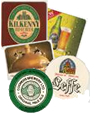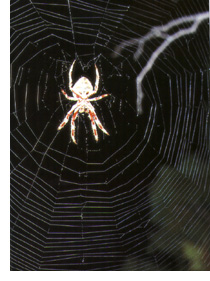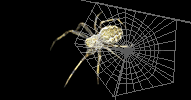WELCOME TO ERIOPHORA DESIGN
This small Australian business has provided web design services to small businesses,
not-for-profit organisations and individuals since 1998.

These are just a few that got caught
in an Eriophora web:
 Small
businesses:
Small
businesses: providers of goods (children's cubby houses) and services
(landscaping), as well as opponities for a little R & R.
Societies: A couple of academic societies
with a biological focus.
Individuals: Currently home to a couple of checky
Australians - one of which is a lizard!
Eriophora also features a number of 'interesting' pages featuring image
libraries and other collections.

 Check
out the image libraries and collections caught in this Eriophora
web:
Check
out the image libraries and collections caught in this Eriophora
web:
Miscellaneous
photo libraries
A
collection of coasters from around the world.
Why Eriophora?
ìThe most advanced web is the wheel web of the Eriophora
spiders - built with mathematical precision, the wheel web is the pinnacle
of evolution concerning the use of silk.î
 Eriophora
Eriophora (pronounced
er-ee-OH-for-uh) refers to one genus of orb weaving spiders commonly referred
to as the garden orb weaving spiders (Family Araneidae).
Eriophora transmarina
and
E. biapicata are examples found in southern and eastern Australia.
Other
orb weaving spiders found in Australia.
All orb weavers make suspended, sticky wheel-shaped orb webs. Orb webs have
developed as an efficient means of capturing flying insects. Their structure
provides a unique combination of large capture area with near invisibility,
making detection and avoidance difficult, especially at night. Only when the
web is covered with dew is it clearly visible. Orb webs also need relatively
little silk to build and they can be completed quickly.
Further information about these spiders ...
Identification, Toxicity, General Ecology, Web Construction plus an
animated example |
Photo credits, sources & Links |
Last updated:
March 21, 2005



 Small
businesses: providers of goods (children's cubby houses) and services
(landscaping), as well as opponities for a little R & R.
Small
businesses: providers of goods (children's cubby houses) and services
(landscaping), as well as opponities for a little R & R.
 Check
out the image libraries and collections caught in this Eriophora
web:
Check
out the image libraries and collections caught in this Eriophora
web: Eriophora (pronounced
er-ee-OH-for-uh) refers to one genus of orb weaving spiders commonly referred
to as the garden orb weaving spiders (Family Araneidae). Eriophora transmarina
and E. biapicata are examples found in southern and eastern Australia.
Other
orb weaving spiders found in Australia.
Eriophora (pronounced
er-ee-OH-for-uh) refers to one genus of orb weaving spiders commonly referred
to as the garden orb weaving spiders (Family Araneidae). Eriophora transmarina
and E. biapicata are examples found in southern and eastern Australia.
Other
orb weaving spiders found in Australia.